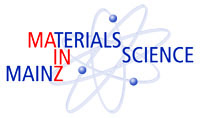


Physikalisches Kolloquium
May 7, 2024 at
4:15 p.m.
in
HS KPH
Prof. Dr. Friederike Schmid
Institut für Physik
friederike.schmid@uni-mainz.de
Prof. Dr. Hartmut Wittig
Institut für Kernphysik
hartmut.wittig@uni-mainz.de
The Hum of Space-Time – A New Window on Einstein’s Universe
Prof. Dr. Michael Kramer (Max Planck Institute for Radio Astronomy, Bonn)
Pulsars, the natural beacons of the universe, put physics to extreme test. As neutron stars, they are not only the densest objects in the observable universe, but they also serve as high-precision laboratories for testing the general theory of relativity. Pulsars not only allow the observation of predicted effects that cannot be observed by other methods, but they provide also extremely precise tests of the properties of gravitational waves. The latest results even use pulsars as galactic gravitational wave detectors, which detect a continuous "hum" of space-time. This buzz is, most likely, caused by the merging of supermassive black holes in the early universe. The talk gives an overview of the latest results and an outlook into the future.
Attachment